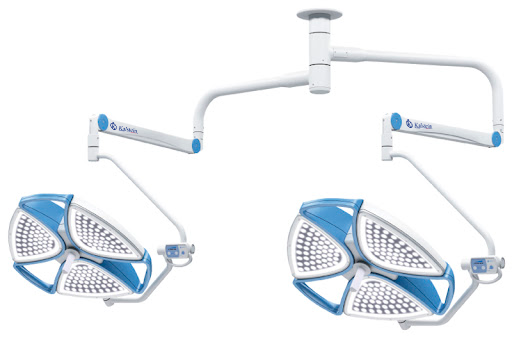The use of lights within the surgical space should be designed primarily, within the operating rooms that exist in hospitals and outpatient surgery centers, but also, can be handled elsewhere in health centers, to provide high quality lighting for the procedures that are performed in these places.
Lighting is used in emergency rooms, labor and delivery rooms, examination rooms and any other place where medical procedures are performed. Also, lighting in general, is used by doctors, surgeons and general staff.
These types of lights are important because they have the ability to provide hours of bright lighting, without causing excessive heating to the patient or staff working in an operating room.
Types of Lights in the Operating Room
Currently, there is a range of lights that can be used to meet the requirements demanded by doctors in a surgery room, where a better perspective is needed during the interventions. That is why the lights should be homogeneous and provide clear illumination, because a test light is used during medical procedures, while the operating room lights are used during surgical procedures.
Therefore, the following types of lights can be installed inside an operating room, which are:
- Incandescent: developed in halogens, responsible for reducing luminous flux, causing the shading of the glass, required by very high temperatures, using low voltage halogen bulbs with a luminous efficiency of 22 lm/W and a duration of approximately 1,000 hours. On the other hand, there are the non-halogen, and they can carry an inactive gas, and in the surgical environment they are used with a luminous efficiency of between 10-15 lm/W and duration of 1,000 h.
- Gas discharge: These types of lights work by means of the transmission of gas, as a result of the excitation that has been subjected to electric shocks.
- LED lights: it is based on the use of semiconductors that when directly polarized have the ability to emit light. They allow a great versatility related to the change of color, as well as in the architecture of the lamp, because its size is much smaller.
- Fiber optic for surgical illumination: agree that high-intensity light be reflected to the operation site, while retaining heat and electrical equipment at a distance from the patient and other medical equipment.
Benefits of Proper Lighting in an Operating Room
It is essential for the hospital environment, the design of the lighting, both generated by the surgical lamps and those of the operating room or by complementary lamps. The illumination should be complete, and be 1000 lux throughout the operating room. That said, the lighting is equivalent to that emitted by the sun at noon.
It should be noted that because a large part of the light is not reflected but absorbed in the procedure area, the lights in the operating theaters must provide a fundamentally enhanced amount of light.
On the other hand, lights usually generate heat, but with the use of LED bulbs, they are able to provide the flow of electric current in a single sense, much more efficiently, avoiding shadows, to achieve a powerful lighting in the operating room
Surgical Lamps in Spain
At Kalstein, we are forerunners of technology in medical equipment, and we incorporate the modern YR surgical lamp of shadowless operating lights, meeting the demands of users. Likewise, we provide the different colors (green, amber, red and warm/cold white) are properly combined where it is created (in the single light beam capacitor), but not in the surgical field, which generates a super high CRI (Ra & gt; = 95). Meanwhile, the new light source requires fewer LEDs to achieve ideal lighting with less radiated heat.
We also have the best prices in the market, because we are manufacturers and have the best advice to make your purchase the most accurate. Check out our catalog at HERE For your convenience, visit our page HERE

